|
Have you ever wished J.S. Bach had created a fugue to be played with Fantasia in C Major, BWV 570 for organ solo? I have and decided to create one. I hope you will enjoy my fugue in C Major which is based on the opening pedal motive of Fantasia in C Major. Recorded on Hauptwerk Obervellach sample set. Dedicated to Rien Schalkwijk. Score: www.sheetmusicplus.com/title/fantasia-in-c-major-bwv-570-by-johann-sebastian-bach-with-fugue-in-c-major-by-vidas-pinkevicius-digital-sheet-music/22363700?aff_id=454957 Score: secrets-of-organ-playing.myshopify.com/products/fantasia-in-c-major-bwv-570-by-j-s-bach-with-fugue-in-c-major-by-v-pinkevicius?utm_source=copyToPasteBoard&utm_medium=product-links&utm_content=web Score: www.sheetmusicdirect.com/en-US/se/ID_No/1212484/Product.aspx We support Ukraine: www.blue-yellow.lt/en If you like what I do, you can buy me some coffee: www.buymeacoffee.com/organduo PayPal: PayPal.Me/VPinkevicius My Hauptwerk setup: www.organduo.lt/tools.html Total Organist - the most comprehensive organ training program online: www.organduo.lt/total-organist Secrets of Organ Playing - When You Practice, Miracles Happen! organduo.lt Listen to my organ playing on Spotify: open.spotify.com/artist/0ckKPIvTWucoN3CZwGodCO?si=YWy7_0HqRvaZwBcovL-RKg
Comments
Sonatina from Gottes Zeit ist die allerbeste Zeit 'Actus Tragicus', BWV 106 | Johann Sebastian Bach10/8/2022 Last week there was a funeral of Vice Rector at Vilnius University St John's church and Ausra and I provided some suitable music for the occasion. Today i'd like to share with you my part - this beautiful Sonatina from Gottes Zeit ist die allerbeste Zeit 'Actus Tragicus', BWV 106 Johann Sebastian Bach. Hope you will enjoy it! Score: www.sheetmusicplus.com/title/organ-sonatina-gottes-zeit-ist-die-allerbeste-zeit-god-s-time-is-the-best-bwv-106-j-s-bach-digital-sheet-music/21314093?aff_id=454957 We support Ukraine: www.blue-yellow.lt/en If you like what I do, you can buy me some coffee: www.buymeacoffee.com/organduo PayPal: PayPal.Me/VPinkevicius My Hauptwerk setup: www.organduo.lt/tools.html Total Organist - the most comprehensive organ training program online: www.organduo.lt/total-organist Secrets of Organ Playing - When You Practice, Miracles Happen! organduo.lt Listen to my organ playing on Spotify: open.spotify.com/artist/0ckKPIvTWucoN3CZwGodCO?si=YWy7_0HqRvaZwBcovL-RKg In this video I will demonstrate my 10 step process of mastering the 3rd movement, Vivace from Trio Sonata No. 3 in D Minor, BWV 527 by J.S. Bach. Hope you will enjoy the sounds of Schnitger organ at Martinikerk Groningen, Hauptwerk sample set by Sonus Paradisi!
Score: https://www.sheetmusicplus.com/title/... Thank you for your support! You get early access and I get to keep going. SOPP350: Two recent developments have made me feel ready for my first Bach Prelude and/or Fugue12/8/2018
Vidas: Hi guys, this is Vidas.
Ausra: And Ausra. V: Let’s start episode 350, of Secrets of Organ Playing Podcast. This question was sent by Leon. And he writes: Dear Vidas: Two recent developments have made me feel ready for my first Bach Prelude and/or Fugue. Last week I learned about the great but shunned French organist Charles Quef. I tried his little fugue and was able to do it slightly less than half speed with fewer than three mistakes per system. After that, I wrote to my contrebombarde friend who played a Quef/Fauré piece, which Bach pieces he'd suggest. He was very busy with Armistice 100th anniversary uploads, so I asked him to wait to answer. Got it today. And this week, I returned to trying the Dupré 79 Chorales, which I had not done since April. I was able to sight-read from where I'd been stuck for many months at #69, to #55 to find one that would require more than a little work. So, based on that, which of David E. Lamb's suggestions would you support, or offer others? Fugue in G Major, BWV 576 (might not be Bach) Fantasia and Fugue in C Minor, BWV 537 Prelude and Fugue in G minor, BWV 535 Prelude and Fugue in C Major, BWV 545 (NOBODY plays the pedal trills in the Prelude) He added that the G minor is seldom played; the C major a lot; the C minor being popular, but still not played that often. I know I have not been able to afford your course to deserve this kind of answer, but I'm hoping for your grace. Peace, Leon V: So, Ausra, I think BWV 535 in G minor is being played right now by Totile in our Unda Maris organ studio. And I’ve been hearing her play at least for couple of months now and she’s making good progress. It’s not an easy fugue. Prelude is virtuosic but rather straight forward. But fugue deserves more attention. What about C major BWV 545? I think any piece that is on this list could be suitable, right Ausra? A: Yes. But in general, speaking all of these pieces are already quite advanced. V: Mmm-hmm. A: Don’t you think so? V: Yes. A: And if I would, I don’t know what Leon played before by J.S. Bach… V: What kind of prelude and fugue. A: Yes V: But he says… A: For my first. V: Yes. A: So... V: This is his first. A: Mmm-hmm. If I would be his teacher, I would suggest for him to start with Eight Little Preludes and Fugues. V: And to play a fugue. A: Yes. To play a fugue, and then start working on somebody from this list. In general, out of this list, I think that maybe that when Fantasia and Fugue in C Minor would be probably a good start for… V: Mmm-hmm. This piece gives a solid impression, but it’s not very technically challenging. A: True. True. So if I would be Leon I would start with this Fantasia. V: If he absolutely protests of playing Eight Little Preludes and Fugues. A: Yes. Because from my eyes of educator… V: Mmm-hmm. A: I think that those Eight Preludes and Fugues, they are so good for us as a guide to develop the Baroque technique, modern(?) technique and to get ready to play Bach. V: Luckily we have some organ students who understand this. And remember Regina in our organ studio. She has a goal, this year, to play the missing two, I think, preludes and fugues, and then by the end of this year she will have played all eight. A: Because each of that cycle, each piece of that cycle, it works on some different Baroque issue—either figure in the manuals or in the bass and it’s really very useful. V: It has such a nice variety of techniques, right? A: True. V: Mmm-hmm. A: True. And actually those, some of those fugues, they are quite complex and not as easy as seem at first. V: For keyboard we could compare the two-part inventions and then later three part sinfonias, which every pianist should play. A: True. And it’s like, if you are a pianist, you will never start to play Bach from the Well Tempered Clavier. You will have to do some smaller works first—two-part inventions, then three parts, and just after that, you would go to the Well Tempered Clavier. V: Have you played any of the inventions and sinfonias before, Ausra? A: Of course. V: Everybody has. A: Of course. Of course, that’s a tradition. And even you will not start with inventions right away. Before playing inventions, you will have to do something like minuets, for example from Anna Magdalena or Wilhelm Friedemann Bach Clavier book. V: Or short preludes… A: Yes. V: They have little preludes too. A: Yes. V: In William Friedemann’s clavier bücklein. Mmm-hmm. So those two-part inventions and three part sinfonias are very helpful for organists too. A: That’s true. V: By the way, I’ve been spending a whole lot of time this week on the organ bench in our church, recording in a slow practice tempo, those two-part inventions. And as of time of this recording, there are only two left, or four, maybe two days left. Because I tried to record two of them every day. And then our team of transcribers can prepare the scores with fingering so that people who want to advance their technique faster, then, without help of guiding, guidance, could take advantage of them. A: True. It’s good to have these inventions ready because they quite are suited, quite well suited for organ too. Not much better suited than for example Well Tempered Clavier. V: Yes. After I finish two-part inventions, I think I will start playing three-part sinfonias too. A: Yes. V: That’s the next step. Excellent. So that’s what, maybe, Leon could play also, some inventions and sinfonias, also. I don’t know if he has played all of the them. It’s really basic foundation when you have played them all. You don’t have to memorize all of them, but spend at least a few weeks with each of them. Then you have the foundations to move on to the more difficult works of Bach. A: That’s right. V: And any other composer too. A: That’s right. V: Thank you guys for listening, and thank you guys for paying attention to what we are saying and applying our tips in your practice. This really helps. Sometimes our advice works on us, sometimes it works on others too. But you never know until you try it. A: So you just need to try it and see if it will work. V: And remember, when you practice... A: Miracles happen! SOPP285: How should I play Bach on smaller church organs in buildings that have flat acoustics?9/10/2018
Vidas: Hi guys, this is Vidas.
Ausra: And Ausra. V: Let’s start Episode 285 of #Secrets of Organ Playing podcast. This question was sent by John, and he writes: I’ve almost learnt In dulci jubilo by Bach, your training videos have been so helpful thank you! It seemed a really daunting piece to learn, but its coming together quicker than I expected, all the sight reading has helped me and your teaching has really helped me improve. My question is how should I play this piece on smaller church organs in buildings that have flat acoustics. When I played my recital on St Johns organ in Vilnius, it was an incredible eye opening experience to play on a large mechanical organ in a huge acoustic. I came to realize how articulate legato suddenly made sense playing on an instrument closer to Bach’s time in a resonant acoustic. When I listen to other professionals play this piece in large churches or cathedrals, I can hear some parts get lost in the blend of legato. But when I play it in our church, I’m worried it sounds a bit too staccato and the gaps between the longer notes sounds a little disjointed. Can you give some advice about playing Bach in flat acoustics? Should I try to play more legato? Did Bach ever use finger substitutions? Would I have to play it faster in flat acoustics? So Ausra, what do you think? A: Well, yes, you need to adjust articulation depending on the acoustics where you are playing in. But even if you are playing in dead acoustics, you don’t have to play Bach legato; that’s a basic rule. And of course, if you will play it staccato it sounds funny and unnatural. V: Remember, Ausra, by the way, that I’ve been the one who would play early music works too detached in our student days. A: Yes, I remember that. V: Many people made fun of me! A: Yes, I remember that. But as I told a few days ago in one of our podcasts: usually first of all, you play everything legato, then you play everything too detached, too staccato; and then finally you realize how it should be played, and you play in the right way. V: Mhm. Do you think that John is progressing to the second stage? A: Yes, I think so. V: Where he’s playing too detached? A: Yes. V: Mhm. A: But anyway, you don’t have to play legato. To answer his question if Bach ever used finger substitutions...so, I think that he didn’t use finger substitutions, because obviously he didn’t play legato, so he didn’t need to use finger substitutions. V: But we shouldn’t be 110% certain about that, because there are some very thick textures at the end of, let’s say, the 3rd Kyrie from Clavierubung by J.S. Bach. A: Well I’ve played it, and I didn’t use finger substitutions. You don’t need it. But...well, and even if you would do it, very rarely, occasionally… V: As an exception. A: As an exception only, and not as a basic rule. V: For example, if the top note is held throughout let’s say 4 measures, right, and beneath that you have three or four other notes in chordal texture, changing...what do you do? Sometimes with this top note you sometimes have to change from 4 to 5. A: Well, yes, there are places like this. V: That’s what I’m talking about. A: But what John I think meant about finger substitutions wasn’t about places like this. And another thing that he writes, that he heard some recording of, you know, a cathedral’s organ, where he could hear the blend of legato. Well, that’s an acoustical trick, because I’m pretty sure that organist didn’t play legato. V: Depending on where the microphones are positioned, right? A: Mhm. V: And depending on what kind of an organist is playing, too. You would hear different sounds. Of course, an organist might play legato. There are probably hundreds of people who still play legato-- A: But if you would play legato in a large acoustics Bach’s music, then you wouldn't hear a legato, but you would hear a mess! V: Mhm. A: And if you hear legato, it meant that the organist articulated. V: Right. So when you listen to the recording, try to see if you hear the beginning and ending of each note. Or just the beginning. If the beginning and ending are blended, then it’s a little bit too much--too legato. But if it’s almost together, then it’s okay. A: Yes. And as you know, about tempo, that’s right, as John mentioned himself: in a dry acoustic, you need to play faster. V: Mhm. A: That’s obvious. You need to do it, because otherwise, if you will play too staccato and in a slow tempo, everybody will get bored. V: Mhm, right. John later asked another question about speeding up the tempo--how to get better at playing at a faster tempo. But maybe we could talk about that in later podcast episode. A: Sure, sure. V: Thank you guys, this was Vidas! A: And Ausra. V: Please send us more of your questions; we love helping you grow. And remember, when you practice… A: Miracles happen. Would you like to master Wir Christenleut, BWV 612 by J.S. Bach from the Orgelbüchlein? I've created this score with the hope that it will help our students who love early music to practice efficiently and recreate articulate legato style automatically, almost without thinking. Thanks to Jan Pennell for meticulous transcription of fingering and pedaling from the slow motion video. Basic level. PDF score. 2 pages. 50% discount is valid until June 5. This score is free for Total Organist students. Bellow is my practice video in slow motion: Would you like to master Prelude and Fugue in C Major, BWV 531 by J.S. Bach?
I have created this score with the hope that it will help my students who love early music to recreate articulate legato style automatically, almost without thinking. Thanks to Alan Peterson for his meticulous transcription of fingering and pedaling from the slow motion videos. Advanced level. PDF score. 7 pages. 50% discount is valid until March 19. Check it out here This score is free for Total Organist students. Would you like to learn J.S. Bach's Christe, aller Welt Trost, BWV 670 from the Clavierubung III? If so, my new PDF score with complete early fingering and pedaling will save you many hours and set you on the path of success to achieve the ideal articulate legato touch naturally, almost without thinking.
This is the 2nd long chorale in the Kyrie/Christe/Kyrie set of Clavierubung III. If you liked Kyrie, Gott Vater in Ewigkeit, BWV 669 or Allein Gott, BWV 676, I'm sure you'll enjoy this piece too. Intermediate level. 4 pages. 50 % is valid until December 27. This score is free for Total Organist students. Would you like to learn "Kyrie, Gott Vater in Ewigkeit", BWV 669 by Johann Sebastian Bach from the 3rd part of Clavierübung?
If so, my practice score with complete fingering and pedaling (2 pages) will help you save many hours of your precious time and achieve articulate legato touch. 50 % discount is valid until December 13. PDF score (2 pages, intermediate level). This score is free for Total Organist students. Enjoy your practice and let me know your experience with this piece. PS If you like BWV 669, you will enjoy BWV 676 too. Would you like to test the limits of your hand and feet independence?
If so, try to learn "Allein Gott in der Höh sei Ehr", BWV 676 by Johann Sebastian Bach from the 3rd part of Clavierübung. Here each part has a completely independent movement making it a perfect trio which is notoriously difficult to master. It's no secret that a trio texture like in a trio sonata sounds so simple but is exceedingly difficult to perform elegantly. I'm practicing it for our upcoming Bach's birthday recital in March. Wish me luck. I'm working on it in a very slow tempo to diminish my inherent clumsiness. If you would like to join me, check out our practice score with complete fingering and pedaling written in. It will save you many hours of your time. I have written the left hand and pedal parts and Ausra - the right hand fingering. By the way, she has played the entire 3rd part of Clavierübung back in Lincoln, NE for one of her DMA recitals on the oldest-sounding organ in the US - the famous Bedient Op. 8. 50 % discount is valid until December 13. This score is free for Total Organist students. PDF score (6 pages). Advanced Level. Enjoy your practice and let us know your experience with this piece. |
DON'T MISS A THING! FREE UPDATES BY EMAIL.Thank you!You have successfully joined our subscriber list.  Photo by Edgaras Kurauskas Photo by Edgaras Kurauskas
Authors
Drs. Vidas Pinkevicius and Ausra Motuzaite-Pinkeviciene Organists of Vilnius University , creators of Secrets of Organ Playing. Our Hauptwerk Setup:
Categories
All
Archives
July 2024
|
This site participates in the Amazon, Thomann and other affiliate programs, the proceeds of which keep it free for anyone to read.
Copyright © 2011-2024 by Vidas Pinkevicius and Ausra Motuzaite-Pinkeviciene.
Terms of Service and Privacy Policy
Copyright © 2011-2024 by Vidas Pinkevicius and Ausra Motuzaite-Pinkeviciene.
Terms of Service and Privacy Policy

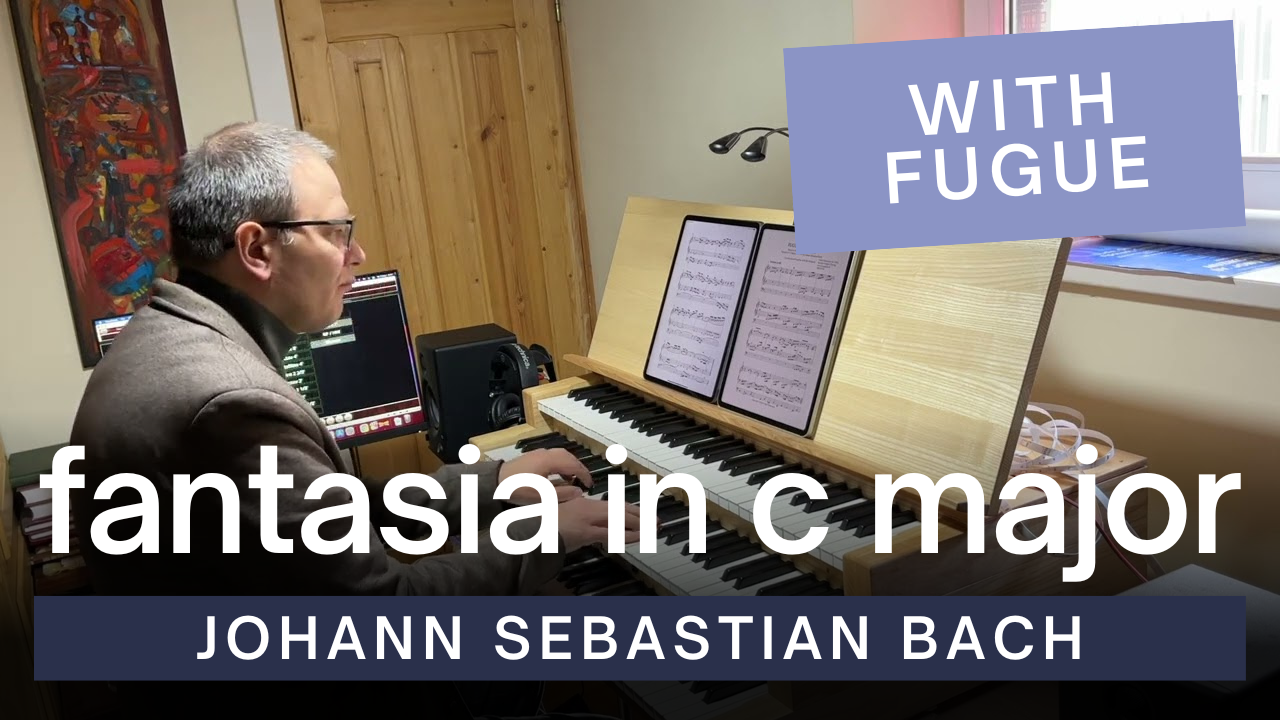
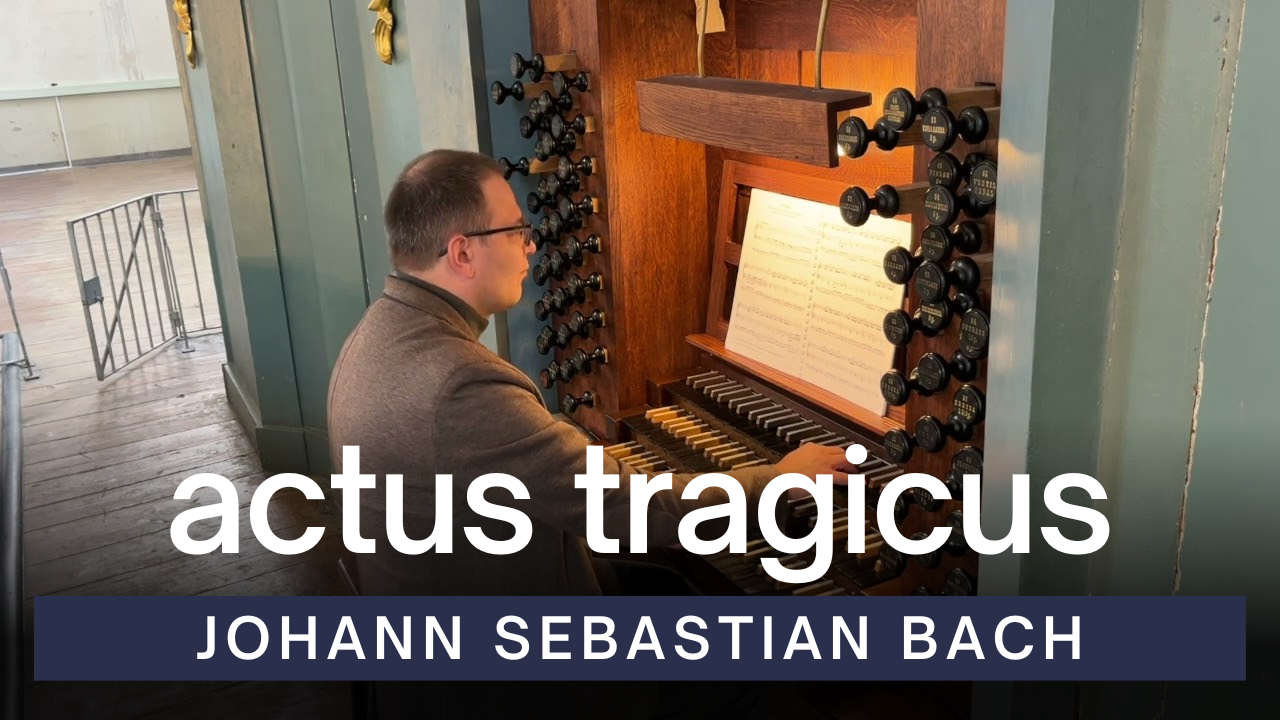


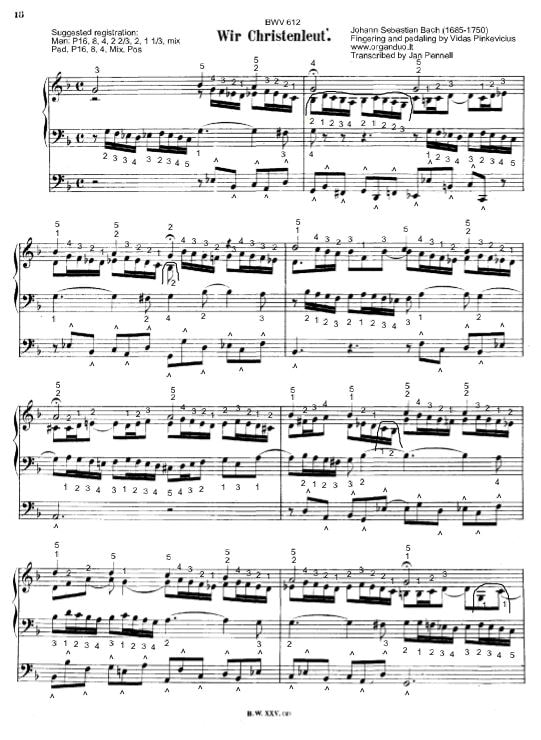


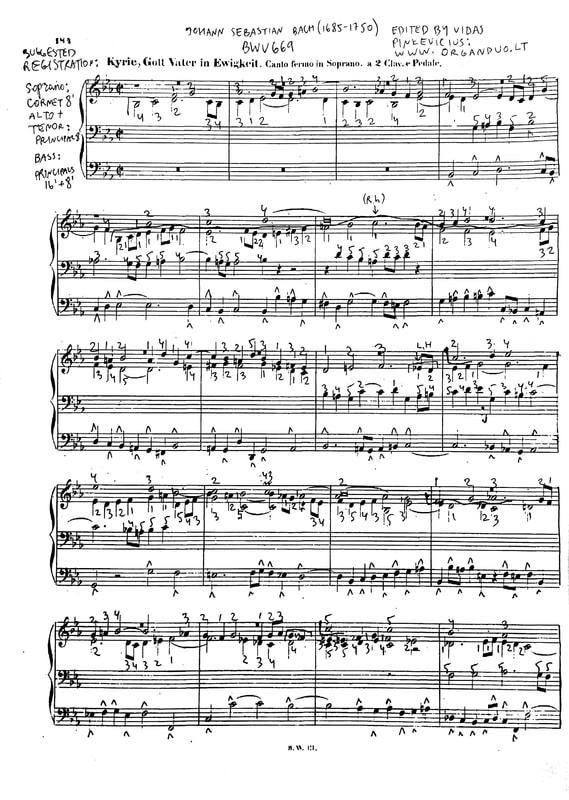
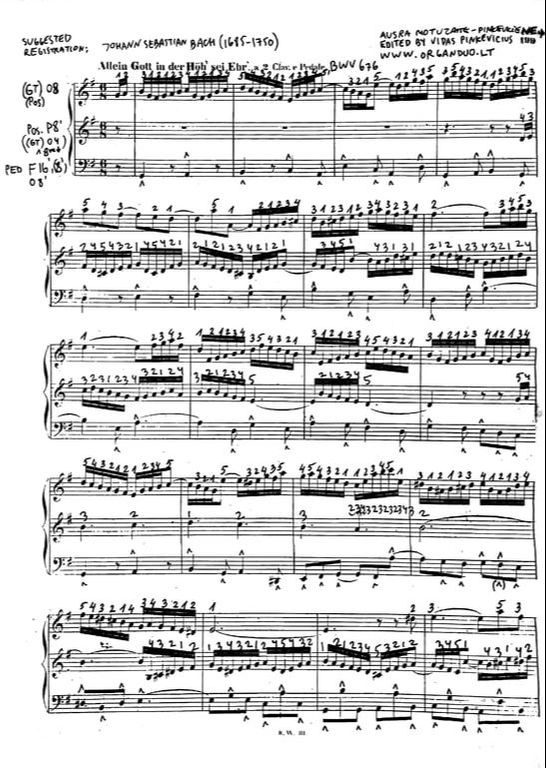



 RSS Feed
RSS Feed